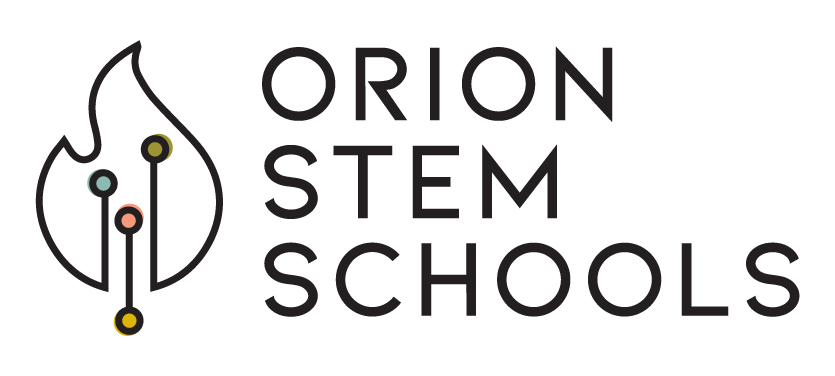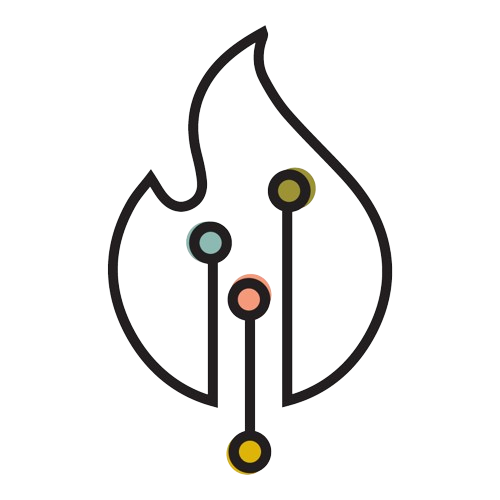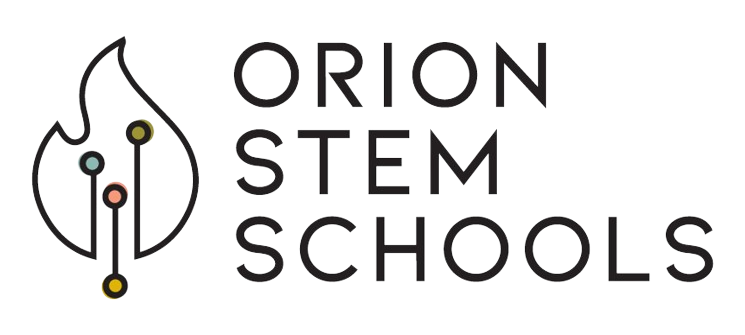Explore the future of learning with Orion STEM Schools, where our commitment to the 8 defining Elements ensures an integrative approach to STEM crafting an educational experience that prepares your child for a successful and innovative career in the ever-evolving world of STEM.
First, Problem-Based Learning encourages students to solve real-world challenges, fostering critical thinking and analytical skills. Rigorous Learning ensures that the curriculum is challenging and in-depth, pushing students to reach their full potential. The emphasis on School Community and Belonging creates a supportive environment that nurtures collaboration and creativity. Career, Technology, and Life Skills are integrated into the learning experience, preparing students for future professional success. Personalization of Learning allows tailored educational pathways according to individual needs and goals. Finally, the External Community aspect promotes collaboration with industries, universities, and other organizations, enriching the learning process with practical insights.
In addition to the six core elements, there are two supporting and contributing elements that play a vital role in the functioning of STEM Schools. Staff Foundations focus on the professional development, expertise, and ongoing training of teachers and staff to ensure they are equipped with the latest methodologies and technologies. This lays the groundwork for an effective STEM education. Essential Factors include elements such as resources, facilities, and administrative support, which, although less visible, are vital to maintaining a thriving STEM environment. Together, these eight elements form a comprehensive framework that shapes the unique character and mission of STEM Schools, emphasizing hands-on learning, real-world application, and collaboration.
Orion STEM Schools’ Educational Model is built on a strong foundation of guiding principles and core values encompass Self-Efficacy, Discernment, Relational Intelligence, Emotional Intelligence, Entrepreneurship mindset, Community, and Belonging.

Elements of STEM Schools
The components of this element address the goal of problem and project-based experiential learning.
Examples include:
INTERDISCIPLINARY INSTRUCTION
Students identify ways that disciplines are interrelated and how they reinforce and complement one another.
STUDENT AUTONOMY
Students have independence in and ownership of their learning. Students set goals for their learning and make choices about how to accomplish them.
STUDENTS REFLECT ON THEIR LEARNING
Students consider the strengths and weaknesses of their learning approaches and ways they can improve them.
Other Problem-Based Experiential Learning Components:
- Interdisciplinary Teams
- Intersession
- Problem-Solving Projects
- Staff-Created Curriculum
- Partners Support Instruction
- Teacher Facilitation of Teamwork and Collaboration Among Students
- Teacher Facilitation of Students Making Interdisciplinary Connections
- Teacher Facilitation of Student Interest
- Teacher Facilitation of Students Engaging in an Engineering Design Process
- Teacher Facilitation of Students Engaging with Real-World Content
- Students Cooperate and Work with One Another as Teams
- Students Make Connections Between the Content They are Learning, the Real World, and Their Lives
The components of this element address rigorous and challenging learning, including cognitive demand.
REAL-WORLD CONTENT
Students make connections between what they are learning and real-world experiences, current events, and/or their daily lives.
STAFF-CREATED CURRICULUM
Teachers and/or administrators create all or parts of the school’s curriculum; this includes creating specific projects.
COGNITIVELY DEMANDING WORK
Students use thinking and process skills. This includes considering alternative arguments or explanations, making predictions, interpreting their experiences, analyzing data, explaining their reasoning, and supporting their conclusions with evidence.
Other Rigorous Learning Components:
- Core Course Sequence
- Mastery Learning
- Partners Support Instruction
- Teacher Facilitation of Students Making Interdisciplinary Connections
- Teacher Use of Assessment to Inform Instruction
- Students Make Interdisciplinary Connections
- Students Participate in Tutoring
- Students Participate in Early College Activities
- Students Take Risks
The components of this element are central to school culture but are non-instructional.
STUDENTS TREAT EACH OTHER WITH TRUST AND RESPECT
Students have an established sense of trust with one another and exhibit respectful behavior.
EXTRACURRICULAR ACTIVITIES
Students participate in sports and clubs that take place outside of regular school hours.
STUDENT INDUCTION PROCESS
Program or activities that support new students’ transition to the school
Other School Community and Belonging components:
- Small School and/or Classes
- Student Access to School Throughout the Day
- Teacher Facilitation of a Positive Social and Emotional Learning Environment
- Staff Emphasize Code of Behavior and Values
- Staff Support Needs of Whole Student
- Students Contribute to School Decision-Making
- Students Demonstrate Code of Behavior and Values
The components of this element are related to the development of skills that students will use in future careers and life.
EARLY COLLEGE ACTIVITIES
Students participate in early college activities such as college courses.
STUDENTS USE TECHNOLOGY
The teacher uses current and emerging technologies in instruction; students use technology as intended for learning purposes.
STUDENTS USE WORKPLACE AND LIFE SKILLS
Students use the skills of communication, creativity, collaboration, leadership, critical thinking, and technological proficiency.
Other Career, Technology, and Life Skills components:
- Instructional Themes
- Partners Support Instruction
- Teacher Facilitation of Student Autonomy
- Teacher/Partner Facilitation of Students Engaging in Career-Readiness Activities
- Teacher Facilitation of Students Learning Skills Specifically Related to the Workplace and Life
- Teacher Facilitation of Teamwork and Collaboration Among Students
- Teacher Models Use of New and Current Technologies
- Students Cooperate and Work with One Another as Teams
- Students Demonstrate Autonomy
- Students Engage and Participate in Career Readiness
- Students Engage and Participate in Service Learning
- Students Participate in Demonstrations of Learning
- Students Participate in Early College Activities
- Students Participate in Higher Education Exposure Activities
The components of this element center around the idea that learning should be customized for each student’s ability and interests. Examples include:
TEACHER DIFFERENTIATION OF INSTRUCTION BASED ON LEARNING NEEDS
The teacher customizes instruction based on ability, learning styles, and developmental levels of the students.
TEACHER FACILITATION OF STUDENT INTEREST
The teacher develops interest by relating students’ lives and experiences to a lesson or unit. This also includes differentiation of the learning experience based on student interest.
TEACHER USE OF ASSESSMENT TO INFORM INSTRUCTION
The teacher uses information on current student understanding to inform and plan future instruction.
Other Personalization of Learning components:
- Advisory
- Small School and/or Classes
- Flexible Schedule
- Student Access to School Throughout the Day
- Teacher/Partner Facilitation of Students Engaging in Career-Readiness Activities
- Teacher Facilitation of Student Autonomy
- Staff Support Needs of Whole Student
- Students Engage and Participate in Career Readiness
- Students Demonstrate Autonomy
The components of this element reflect a connection between STEM schools and the
broader and external community, from neighborhood to state level.
SCHOOL ESTABLISHES AND MAINTAINS A COMMUNITY PRESENCE
Staff creates and develops partnerships with organizations external to the school.
STUDENTS PARTICIPATE IN SERVICE LEARNING
Students participate in service learning or volunteer activities.
STAFF SPREAD PRACTICES
Staff share with others practices they enact in their classrooms and school.
Other External Community Components:
- Staff Establishes and Maintains Partnerships
- Partners Facilitate Spread of Practices
- Partners Help Establish and Maintain Community Presence
- Teacher Leaders Facilitate Communication Across Campuses
The components of this element enable and/or support desired school staff interactions and instructional behaviors.
STAFF COLLABORATE
Staff work through problems and develop ideas together.
STAFF REFLECT ON WORK
Staff work through problems and develop ideas together.
SCHOOL LEADERS FACILITATE STAFF GROWTH AND DEVELOPMENT
School leaders ensure that staff members have opportunities to grow in their roles as STEM school teachers and leaders.
Other Staff Foundations:
- Common Planning Time
- Individual Planning Time
- Non-Instructional Staff
- School Leaders Model Instructional Practice
- School Leaders Model and Support Risk-Taking and Autonomy for Staff
- Staff Engage in Relevant Professional Development/Growth Activities
- Staff Have a Sense of School Ownership
- Staff Participate in Decision Making
- Staff Treat One Another with Trust and Respect
- Staff Work with Autonomy
- STEM Instructional Leaders Support Instruction
The components of this element are environmental factors, staff attitudes, and other situations external to the school model itself that STEM school staff identify as essential.
STAFF ARE FLEXIBLE AND OPEN TO CHANGE
Staff are willing to engage in new practices and adjust what they do for the greatest benefit for students.
REPRESENTATIVE POPULATION
School recruits and enrolls students with a focus on reflecting a population representative of the community/area the school serves.
PROFESSIONAL DEVELOPMENT RESOURCES
Resources available to help teachers and staff develop and further their skills.
Other Essential Factors:
- Family Involvement
- Online Management System
- Open Physical Space
- Regional School
- Partners Provide Money/Material Resources
- Standards
- Staff Believe All Students Can Learn
- Staff are Flexible and Open to Change




